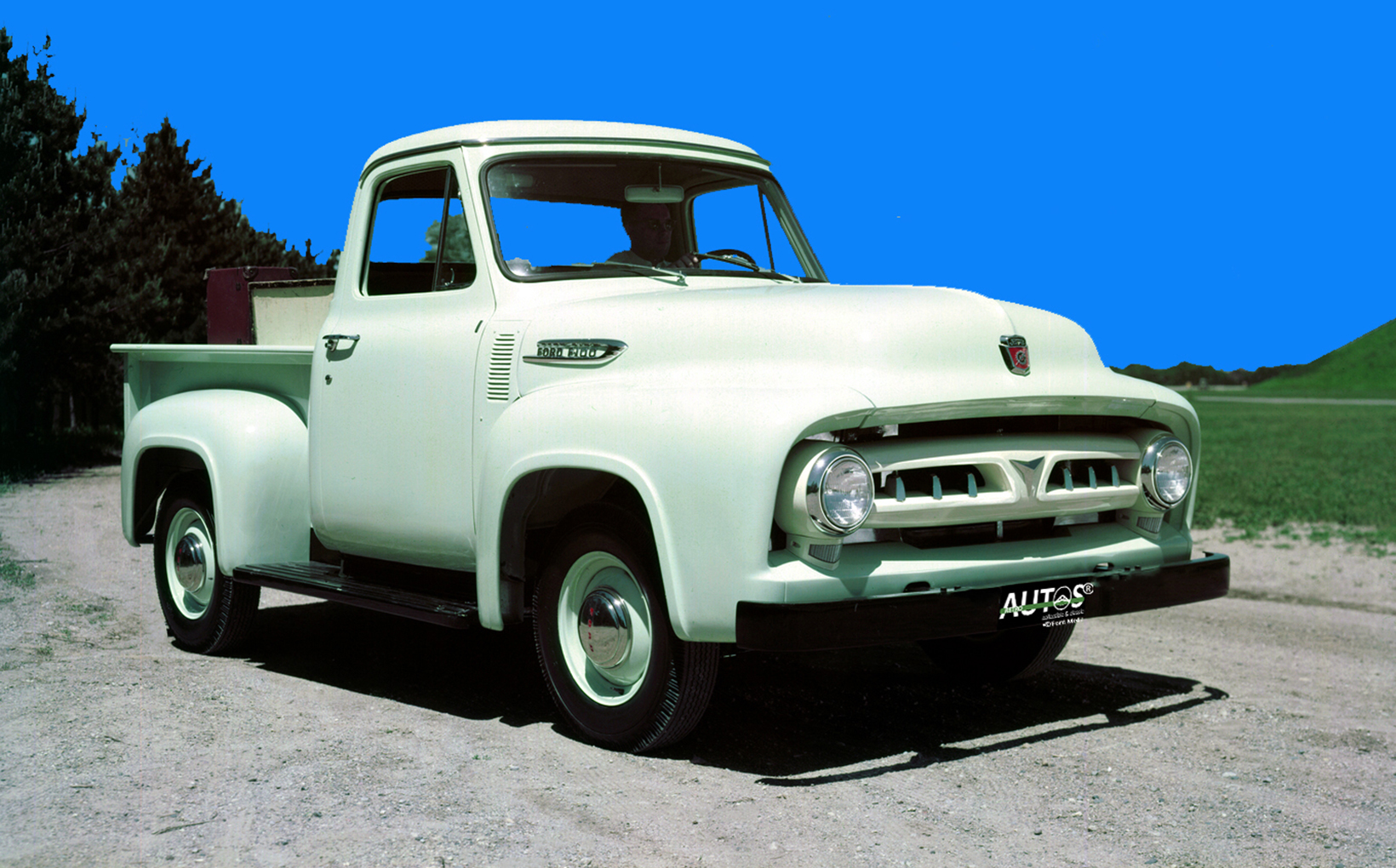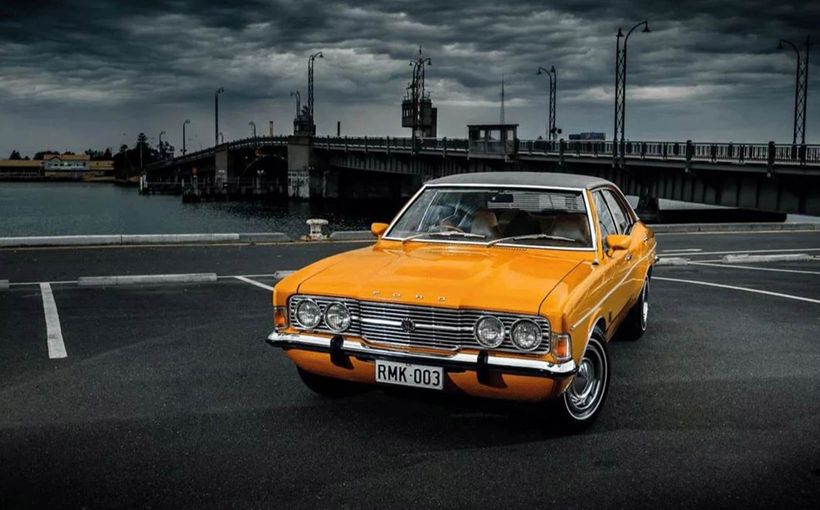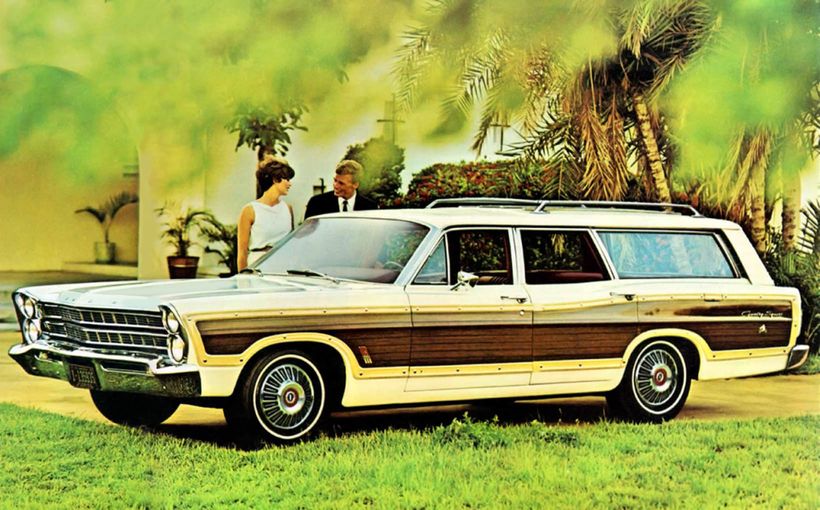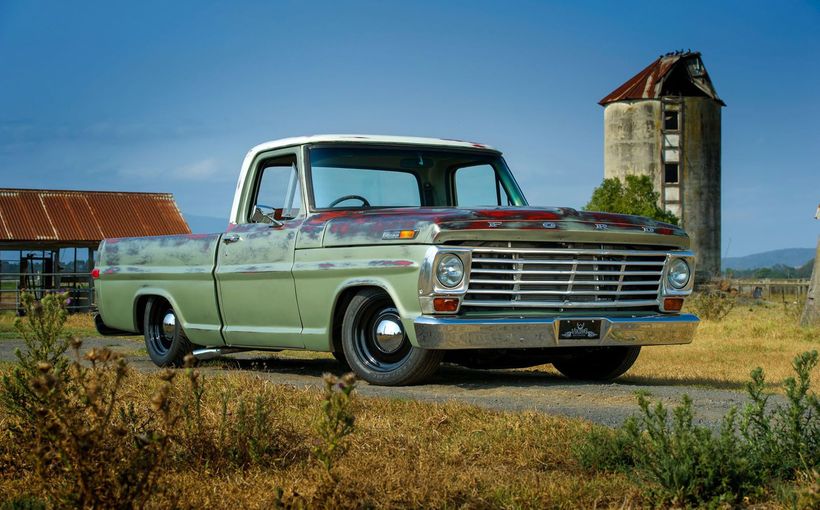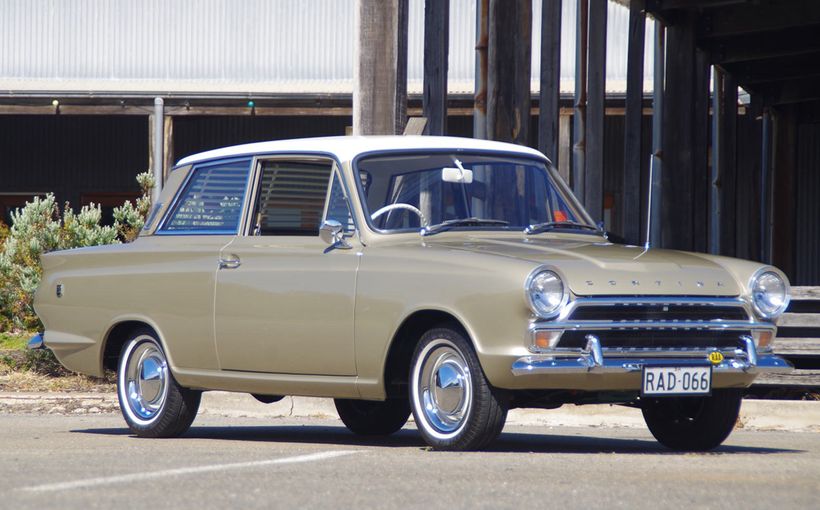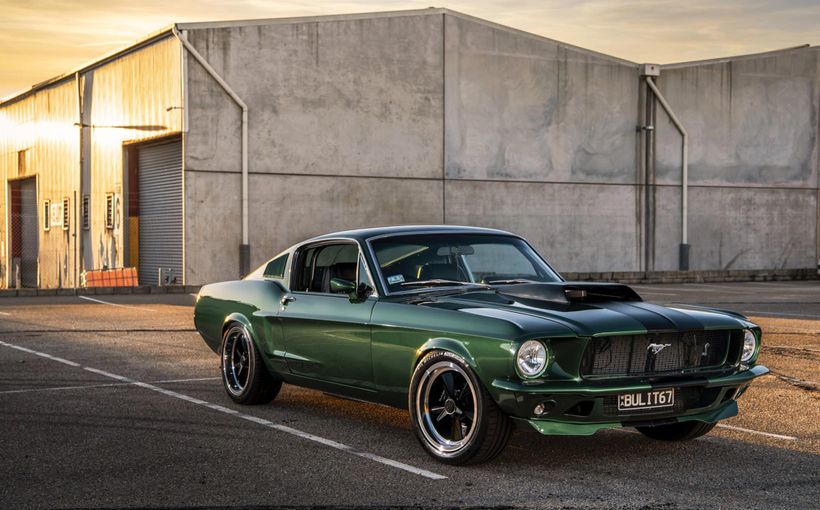1953 & 1957 F100: The 1950s' most influential ‘car’

Here’s a big call. Ford’s 1953 and 1957 F100s are the most influential automobiles of the 1950’s.
Why do I say that? These F100s have set the template for the “light duty” pickup-truck as-a-car. Just about every automotive company in the world now has an F100 replica in its range and their popularity shows no signs of diminishing.


(Images copyright Ford Media.)
$400 million vision of the future

(Image copyright Ford Media.)
Ford spent the equivalent of $US400 million in today’s money to redesign and engineer the 1953 F100 and its larger companions. That is a lot of money to invest in a category which had been largely taken for granted by car companies. But a few decision makers at Ford could see the potential of the pickup truck beyond its spartan, work-a-day role. One of them was designer, Joe Oros.
How Oros came to be involved with styling at Ford in the mid-1940s is one of those fascinating automotive stories.
Back then, Oros was working for George Walker, who owned one of America’s biggest design consultancies. Walker had long established links with the automotive industry. He provided styling proposals to Nash and owned another company which manufactured small trim parts for Ford and others.

In 1946, Walker was contracted by Henry Ford II (HFII) and his second in command, Ernest Breech, to develop an alternative design for the 1949 Ford, because neither executive was happy with what Ford’s own design studio was suggesting.
Oros and Elwood Engel, another Walker employee, contributed to Walker’s proposal. It won the “competition” and became the 1949 Ford.


Within 18 months of finishing the 1949 design, HFII and Breech asked Walker and his team to return to Ford. In addition to the rumored $US12 million annual fee (in today’s money), Walker demanded that he and his team have veto power over anything developed by the company’s design team. Oros oversaw Ford cars and trucks. Engel kept watch on Mercury, Lincoln and advanced products.
Inevitably, the veto power caused friction in the design studios. Breech and HFII, however, believed this competitive environment would generate the creative designs Ford needed if it was to match GM’s styling leadership.



(Images copyright Ford Media.)
Oros’s initial tasks were the 1952 Ford cars and 1953 trucks. He gave them equal priority. In Joe Dominguez’s excellent biography of George Walker, “The Cellini of Chrome”, Oros talked about his vision for trucks.
“Trucks, in my mind, were extremely important, and it was after we joined Ford we got ahead of General Motors in truck design.”
Up until then, trucks were not the most glamorous styling activity and little regard was given to driver comfort and cabin amenities. So, what Oros was championing was quite a breakaway idea. He was supported by Ford’s truck styling studio manager, Will Wagner. Unlike some of his colleagues, Wagner welcomed Oros and his fresh approach.
To bridge the styling gap between the existing trucks and what he planned for 1953, Oros decided to re-style the 1951-52 trucks. He lowered the bonnet line and set the headlights as wide apart as possible. He explained that:
“The changes made the ’51 look a little more powerful. It was the exact same truck (as previous models) but the ’51 looked like a stronger truck.”


(Images copyright Ford Media.)
1953: Ahead of the curve
Oros purposefully designed the 1953 trucks as a car. A notable feature was a curved one-piece windscreen. Said Oros:
“Nobody in truckland had that before, although cars had it…We came out first with the curved windshield for trucks. We beat GM.”

(Image copyright Ford Media.)
The 55% larger windscreen and full width rear window improved visibility. A plain but stylish dashboard wrapped into the doors, as it did on many cars. The window sills were the right height to rest an arm. A wider, softly sprung seat now accommodated three people with ease. All of this enhanced the car-like ambience.

(Image copyright Ford Media.)
A big, in-your-face grille dominated the exterior styling. The bonnet was wider and lower. The front fenders crouched over the wheels to give the truck a hunkered down appearance. Oros said:
“It was designed to make a statement…the nice long hood and the nice long fenders blended together.”

(Image copyright Ford Media.)
To promote the driver focused attributes, Ford proclaimed the new trucks had been “driverized”. Establishing another trend, Ford labelled the models F100 (1/2 ton), F250 (3/4 ton), F350 (1 ton) etc, based on load capacity.

(Image copyright Ford Media.)
On its release the stylish F100 made its Chrysler, Studebaker, International Harvester (IH) and Chevrolet/GMC rivals look like the 1940’s leftovers that they were. Sales jumped 40% to 133,400 in 1953.The F-series captured 26% of the market, the best result in 15 years.




The reaction from GM was swift. Chevrolet and GMC debuted new trucks in March 1955 with styling similar to the ’55 Chevrolet sedan. Both also offered high priced “luxury” models that featured finned rear fenders made of fibreglass. They were attached to the existing tray and fitted flush to the cabin. It looked smart but added no additional cargo space. Sales were underwhelming because the price was high and fibreglass, then a new material for vehicles, was not considered robust enough for working truck wear and tear.

(Image copyright GM Media)
In September 1955 Ford added a wrapped windscreen to its existing cabin and was rewarded with 30% of the truck market. Dodge did the same but could only manage 7%. Ford was obviously onto something with buyers.


(Images copyright Ford Media and Stellantis Media.)
1957: More style
For the 1957 model year, Oros championed another breakthrough design change. It is this shape that has dominated pickup truck styling ever since.
The new model was 3.5 inches/90mm lower and two inches/51mm wider. It had a squared-off purposeful front-end. The front fenders were integrated with a flattened and lowered “clam shell” bonnet that stretched across the width of the vehicle and folded down into the fenders.
What made the F100 very popular was the standard, all-steel rear fenders that were flush with the cabin edges. They allowed for a much wider tray which increased load space by 23%. Ford labelled it “Styleside” and boasted it was “styling with a purpose”.

(Image copyright Ford Media)
In 1957 IH also released a car like truck, but if you wanted flush fenders that was extra money. Not to be left out, Dodge hurriedly combined a truck with station wagon fenders. They were attached by hand to the existing step-side tray at Dodge’s in-house customising workshop. Less than 1300 were sold over two years. GM seemed content to just add more chrome.



(Images copyright GM Media and Retroautos)
The template


(Images copyright Ford Media)
The 1953 and 1957 F100s have become the template from which all automotive companies now shape their pickup trucks, and most SUVs. A walk through any car park will reveal the homage they pay to Oros’ bold, bluff, hunkered down front end and clam shell bonnet. Nissan, Mitsubishi, Isuzu, GMC, Land Rover, Chevrolet, RAM, Toyota and so many others have sampled the styling themes from the F100. Four doors are common. Performance and luxury models proliferate.
No other vehicle from the 1950s has had such a long-term influence. Ford’s advertising for the 1972 F100 summed it all up and predicted the future:
“Ford pickups: work like trucks, ride like cars…Ford’s better ideas provide car-like ride.”


(Images copyright Ford Media and Tata Motors)
By the end of the 1980s pickup trucks, and SUVs, were replacing sedans in the USA as the most popular family vehicle. In 2022 Ford made its 40 millionth F-Series truck, making it the best-selling truck in America for the 46th straight year and the overall best-selling vehicle for the 41st year in a row.
A similar transition has occurred in Australia where light duty trucks are now Australia’s best-selling vehicles. The price of some goes beyond $100,000.
Joe Oros: Legacy
In 1955 George Walker sold his consultancy and became the vice president of design for Ford. Oros and Engel were hired as senior Ford executives. Oros retained responsibility for all Ford badged cars and trucks. Engel kept the Mercury, Lincoln and advanced design studios. In 1968 Oros was promoted to the vice presidency of design at Ford Europe. He retired in 1975. One year later, Ford’s F series became number one in the US truck market.

(Image copyright Ford Media)
There is no doubt that Oros’ legacy is extensive. He took a 1950s working vehicle and helped remake it into an aspirational symbol which now spans the work/life divide. Its growth trend shows no sign of peaking any time soon. But there is even more to his story.

(Image copyright Ford Media)
From 1948 to 1968, every Ford badged American vehicle came out of styling studios managed by Oros, including Customline, Fairlane, Galaxie, Thunderbird, Falcon, Mustang, F150, Maverick and Torino. His European resume adds the TC Cortina, Fiesta, Escort Mk II, Granada Mk I to the list. For most people, just some of those achievements would be a significant legacy, yet his goes deeper and wider.


(Images copyright Ford Media)


(Images copyright Ford Media)
In 1949 Oros created the X-100 concept car that featured several design ideas, particularly a semi tubular side body styling theme that linked the headlights with large round “jet exhaust” tail lights. Oros reasoned that if Ford did not lay claim to these themes, then others, especially GM, would.
It was a masterstroke. The overall theme was used on the 1952 Ford and for almost the next two decades the circular tail light was a Ford hallmark.


(Images copyright Ford Media)

(Images copyright Ford Media)
The late Gale Halderman, who drew the outline of the first Mustang while working for Oros, was interviewed by the Benson Ford Research Centre. Here’s what he said:
“I worked for Joe for years. Joe was probably the hardest working designer that Ford Motor Company ever had….He probably designed more cars for Ford than any other single person.”



(Images copyright Ford Media)
Oros’ wife, Betty, was one of America’s first female automotive designers. She worked at Hudson before World War II. Her resume included the car based 1941 Hudson “Big Boy” utility. Betty Oros died in 2001. Joe died, aged 96, in 2012.

(Image copyright Ford Media)
Retroautos is written and published with passion and with pride by David Burrell. Retroautos stories and images are copyrighted. Reproducing them in any format is prohibited. Retroautos is a registered trademark. Reproducing it in any format is prohibited.

